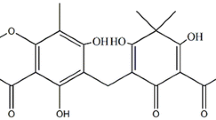Abstract.
Introduction: Taurine chloramine (TauCl) and taurine bromamine (TauBr) are the main haloamines produced by activated neutrophils. TauCl exerts both anti-inflammatory and microbicidal activities. Clinical studies showed that TauCl may be useful as an antimicrobial agent in the local treatment of infections. Much less is known about TauBr. Circumstantial evidence suggests that Propionibacterium acnes (PA) has a role in the inflammation of acne. Available topical therapies include antimicrobial agents which reduce total PA numbers and anti-inflammatory agents which suppress activity of the cells present in acne inflammatory lesions. In this study the bactericidal activities of TauBr and TauCl against PA and Staphylococcus epidermidis (SE), as a control strain, were investigated. Moreover, the influence of these haloamines on the generation of reactive oxygen species (ROS) by activated neutrophils was also tested.
Materials and Methods: TauBr and TauCl were prepared by reaction of taurine with HOBr and HOCl, respectively. The reaction was monitored by UV absorption spectra. The bactericidal activities of TauBr and TauCl were determined by the pourplate method. The generation of ROS by neutrophils was determined by luminol chemiluminescence assay.
Results: In our experimental set-up, TauBr showed stronger antibacterial activity than TauCl. Interestingly, PA was significantly more susceptible to TauBr than SE was. Moreover, TauBr at non-cytotoxic concentrations significantly reduced ROS generation by neutrophils.
Conclusions: Since PA is considered to be an etiological agent in acne and ROS are closely correlated with the pathogenesis of inflammatory skin diseases, the reported data suggest that TauBr may be a good candidate for the topical therapy for acne vulgaris.
Similar content being viewed by others
Abbreviations
- PA:
-
Propionibacterium acnes
- SE:
-
Staphyloccocus epidermidis
- HOCl:
-
hypochlorous acid
- TauBr:
-
taurine bromamine (N-bromotaurine)
- TauCl:
-
taurine chloramines (N-chlorotaurine)
- ROS:
-
reactive oxygen species
- PMNs:
-
neutrophils
- H2O2 :
-
hydrogen peroxide
- HOBr:
-
hypobromous acid
- MPO:
-
myeloperoxidase
- PBS:
-
phosphate-buffered saline
- AFM:
-
atomic force microscopic
- HBSS:
-
Hank’s balanced salt solution
- LCL:
-
luminol-dependent chemiluminescence
- c.f.u.:
-
colony forming unit
- cps:
-
count per second
Author information
Authors and Affiliations
Corresponding author
About this article
Cite this article
Marcinkiewicz, J., Biedroń, R., Białecka, A. et al. Susceptibility of Propionibacterium acnes and Staphylococcus epidermidis to killing by MPO-halide system products. Implication for taurine bromamine as a new candidate for topical therapy in treating acne vulgaris. Arch. Immunol. Ther. Exp. 54, 61–68 (2006). https://doi.org/10.1007/s00005-006-0007-1
Received:
Accepted:
Published:
Issue Date:
DOI: https://doi.org/10.1007/s00005-006-0007-1




